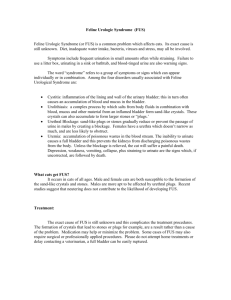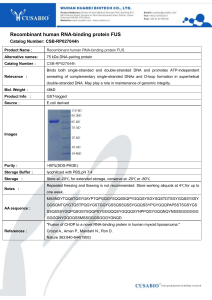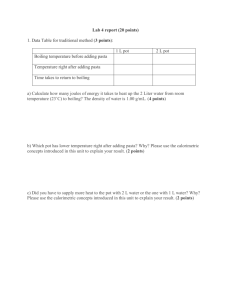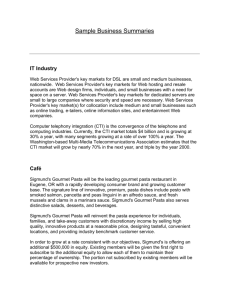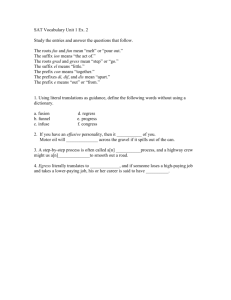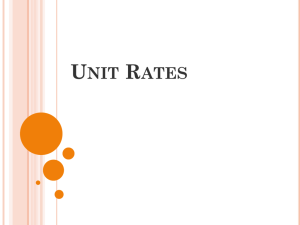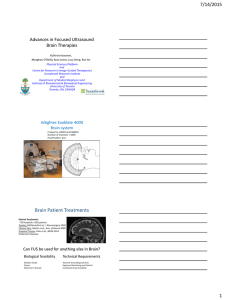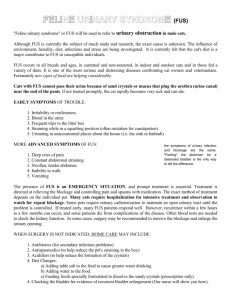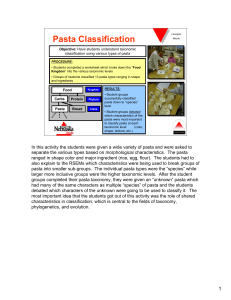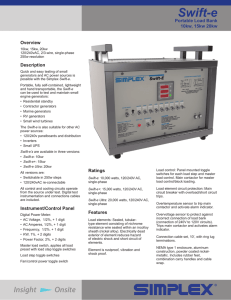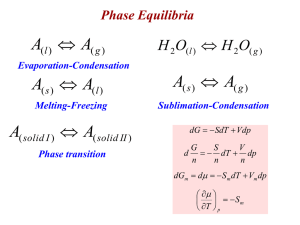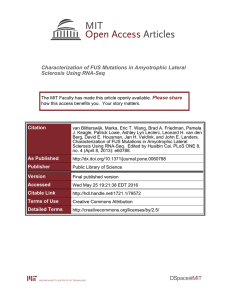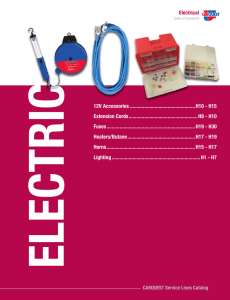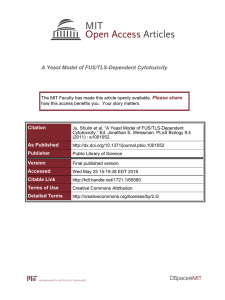a poster - PASTA Project
advertisement
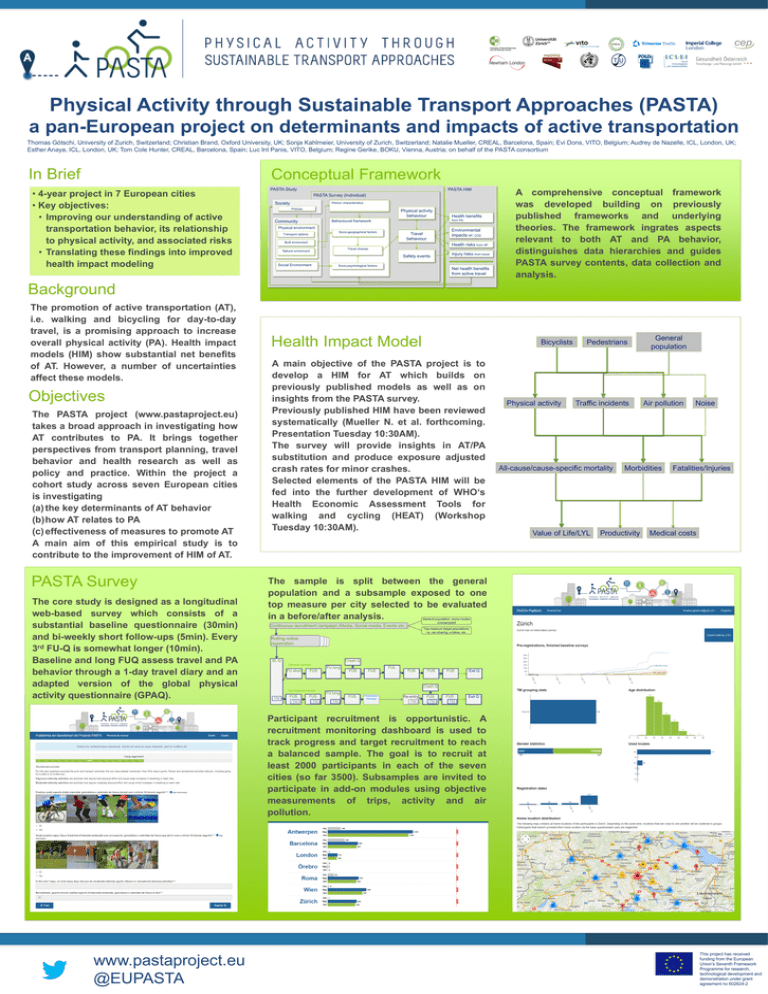
Physical Activity through Sustainable Transport Approaches (PASTA) a pan-European project on determinants and impacts of active transportation Thomas Götschi, University of Zurich, Switzerland; Christian Brand, Oxford University, UK; Sonja Kahlmeier, University of Zurich, Switzerland; Natalie Mueller, CREAL, Barcelona, Spain; Evi Dons, VITO, Belgium; Audrey de Nazelle, ICL, London, UK; Esther Anaya, ICL, London, UK; Tom Cole Hunter, CREAL, Barcelona, Spain; Luc Int Panis, VITO, Belgium; Regine Gerike, BOKU, Vienna, Austria; on behalf of the PASTA consortium In Brief Conceptual Framework • 4-year project in 7 European cities • Key objectives: • Improving our understanding of active transportation behavior, its relationship to physical activity, and associated risks • Translating these findings into improved health impact modeling PASTA Study PASTA HIM Your textPASTA goes here. Survey (Individual) Society Person characteristics Policies Physical activity behaviour from PA Behavioural framework Community Physical environment Socio-geographical factors Transport options Health benefits Environmental impacts AP, CO2 Travel behaviour Built enviroment Health risks from AP Travel choices Natural enviroment Safety events Social Environment Socio-psychological factors Injury risks from travel Net health benefits from active travel A comprehensive conceptual framework was developed building on previously published frameworks and underlying theories. The framework ingrates aspects relevant to both AT and PA behavior, distinguishes data hierarchies and guides PASTA survey contents, data collection and analysis. Background The promotion of active transportation (AT), i.e. walking and bicycling for day-to-day travel, is a promising approach to increase overall physical activity (PA). Health impact models (HIM) show substantial net benefits of AT. However, a number of uncertainties affect these models. Objectives The PASTA project (www.pastaproject.eu) takes a broad approach in investigating how AT contributes to PA. It brings together perspectives from transport planning, travel behavior and health research as well as policy and practice. Within the project a cohort study across seven European cities is investigating (a) the key determinants of AT behavior (b)how AT relates to PA (c) effectiveness of measures to promote AT A main aim of this empirical study is to contribute to the improvement of HIM of AT. PASTA Survey The core study is designed as a longitudinal web-based survey which consists of a substantial baseline questionnaire (30min) and bi-weekly short follow-ups (5min). Every 3rd FU-Q is somewhat longer (10min). Baseline and long FUQ assess travel and PA behavior through a 1-day travel diary and an adapted version of the global physical activity questionnaire (GPAQ). Health Impact Model Bicyclists A main objective of the PASTA project is to develop a HIM for AT which builds on previously published models as well as on insights from the PASTA survey. Previously published HIM have been reviewed systematically (Mueller N. et al. forthcoming. Presentation Tuesday 10:30AM). The survey will provide insights in AT/PA substitution and produce exposure adjusted crash rates for minor crashes. Selected elements of the PASTA HIM will be fed into the further development of WHO‘s Health Economic Assessment Tools for walking and cycling (HEAT) (Workshop Tuesday 10:30AM). Physical activity Pedestrians Traffic incidents All-cause/cause-specific mortality Value of Life/LYL General population Air pollution Morbidities Productivity Noise Fatalities/Injuries Medical costs The sample is split between the general population and a subsample exposed to one top measure per city selected to be evaluated in a before/after analysis. General population, some modes oversampled Continuous recruitment campaign (Media, Social-media, Events etc.) Top-measure target populations, i.e. car-sharing, e-bikes, etc. Rolling online registration BL Q Crash Q General sample FU short FU long FUS FUL FUS FUS FUS FUS FUS Exit Q FUS TM Exit Q Crash Q Top-measure sample TM FUS TM FUS TM FU long FUS TM Hybernation message Re-entry TM FUS TM Participant recruitment is opportunistic. A recruitment monitoring dashboard is used to track progress and target recruitment to reach a balanced sample. The goal is to recruit at least 2000 participants in each of the seven cities (so far 3500). Subsamples are invited to participate in add-on modules using objective measurements of trips, activity and air pollution. www.pastaproject.eu @EUPASTA This project has received funding from the European Union’s Seventh Framework Programme for research, technological development and demonstration under grant agreement no 602624-2

